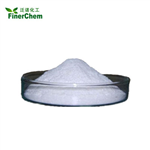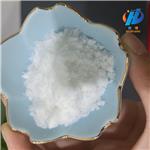- L-Leucine
-

- $0.00 / 25Kg/Drum
-
2024-04-30
- CAS:61-90-5
- Min. Order: 1KG
- Purity: 99%
- Supply Ability: 200mt
- L-Leucine
-

- $0.00 / 1kg
-
2024-04-20
- CAS:61-90-5
- Min. Order: 1kg
- Purity: 99%
- Supply Ability: 10000kg
- L-Leucine
-

- $50.00 / 1kg
-
2024-04-18
- CAS:61-90-5
- Min. Order: 1kg
- Purity: 99.10%
- Supply Ability: 50000kg
|
| | L-Leucine Chemical Properties |
| Melting point | >300 °C (lit.) | | Boiling point | 122-134 °C(Press: 2-3 Torr) | | alpha | 15.4 º (c=4, 6N HCl) | | density | 1,293 g/cm3 | | vapor pressure | <1 hPa (20 °C) | | refractive index | 1.4630 (estimate) | | FEMA | 3297 | L-LEUCINE | | Fp | 145-148°C | | storage temp. | 2-8°C | | solubility | 1 M HCl: 50 mg/mL | | form | powder | | pka | 2.328(at 25℃) | | color | White to Off-white | | PH | 5.5-6.5 (20g/l, H2O, 20℃) | | Odor | at 100.00?%. odorless | | optical activity | [α]20/D +15.5°, c = 2 in 6 M HCl | | Water Solubility | 22.4 g/L (20 C) | | λmax | λ: 260 nm Amax: 0.05
λ: 280 nm Amax: 0.05 | | JECFA Number | 1423 | | Merck | 14,5451 | | Sublimation | 145-148 ºC | | BRN | 1721722 | | Stability: | Stability Moisture and light sensitive. Incompatible with strong oxidising agents. | | LogP | 0.80 | | CAS DataBase Reference | 61-90-5(CAS DataBase Reference) | | NIST Chemistry Reference | Leucine(61-90-5) | | EPA Substance Registry System | L-Leucine (61-90-5) |
| | L-Leucine Usage And Synthesis |
| description | L-leucine is one of the eight essential amino acids, and belonging to the aliphatic amino acids within twenty kinds of proteins. L-leucine and L-isoleucine and L-valine are called three branched chain amino acids. L-leucineLeucine and D-leucine are enantiomers . It is a white shiny hexahedral crystal or white crystalline powder at room temperature , Odorless, slightly bitter . In the presence of hydrocarbons ,it is stable in the aqueous mineral acid. Per gram is dissolved in 40ml water and about 100ml acetic acid. Very slightly soluble in ethanol or ether, dissolved in formic acid, dilute hydrochloric acid, a solution of alkali hydroxides and a solution of carbonates.
L-leucine can promote insulin secretion, can lower blood sugar; promote sleep, reduce sensitivity to pain, migraine headaches, anxiety and ease tension, reduce symptoms of chemical reactions disorder in the body caused by alcohol , and helps control alcoholism; it has a role in the treatment of dizziness , also can promote skin wound and bone healing, so doctors usually advise patients to take leucine supplements after surgery. amino acid infusion and comprehensive amino acid preparations are often formulated to be used in the treatment or health care; also be used as food, cosmetics and feed additives and plant growth promoter.
The best food sources of leucine include brown rice, beans, meat, nuts, soy flour, and whole wheat. Excessive intake can also cause side effects, high intake can cause pellagra, vitamin A deficiency, dermatitis, diarrhea, mental disorders and other issues,which needs to be paid attention to . Diet containing too much leucine will increase the number of ammonia in the body and destroy the liver and kidney function. Therefore, patients with impaired liver or kidney function should not be excessive intake, otherwise it will exacerbate the condition.
| | Chemical Properties | White shiny hexahedral crystals or white crystalline powder. Slightly bitter (DL-leucine is sweet). Sublimation at 145~148 ℃. Melting point 293~295 ℃ (decomposition). It belongs to the essential amino acids,and adult men requirement is 2.2g/d (151 version). It is necessary in normal growth for infants and maintaining normal nitrogen balance for adults.
Natural products are found in the spleen, heart, etc., and are present in a variety of plant and animal tissues in the form of the proteins, free out after decomposition and corruption.
| | Uses | Amino acid drugs. Used as amino acid infusion and comprehensive amino acid preparations. For the diagnosis and treatment of children with idiopathic high blood sugar and glucose metabolism disorders,bile liver disease associated with reduced secretion , anemia, poisoning, muscular dystrophy, poliomyelitis, neuritis and mental illness. Diabetes, cerebral vascular sclerosis and kidney disease associated with proteinuria and hematuria is contraindicated. Gastric and duodenal ulcer patients should not be served.
The product is used as a nutritional supplement,an amino acid infusion preparation and a comprehensive amino acid preparation,a hypoglycemic agent, a plant growth promoter.The product can be used as a spice according to GB 2760-8 .
| | toxicity | Safe for food (FDA, §172.3202000).
LD505379mg/kg (rat, subcutaneously).
| | Description | Small, white, lustrous plates, or a white, crystalline powder, with
a slightly bitter taste. One g dissolves in about 40 mL of water
and in about 100 mL of acetic acid. It is sparingly soluble in
alcohol, but is soluble in dilute hydrochloric acid and in solutions
of alkali hydroxides and carbonates. ι-Leucine may be synthesized by bromination, followed by amination of isocaproic acid; via the
acetamidomalonic ester; by isolation from gluten, casein, keratin;
from hydantoin. | | Chemical Properties | Leucine occurs as a white or almost off-white crystalline powder or
shiny flakes. | | Chemical Properties | L-Leucine is odorless and has a slightly bitter taste. L-Leucine is a branched-chain, essential amino acid that stimulates
muscle protein synthesis. | | Occurrence | Reported found as a constituent in proteins; also present in the free state in the human body | | Uses | L-Leucine is an essential amino acid. L-Leucine acts as a nutrient signal to stimulate protein synthesis. It has also activates the mammalian target of rapamycin kinase that regulates cell growth. | | Uses | L-Leucine plays a vital role in hemoglobin formation, protein synthesis and metabolic functions. It assists the growth and repair of muscle and bone tissue. It is used in the treatment of amyotrophic lateral sclerosis - Lou Gehrig's disease. It prevents the breakdown of muscle proteins after trauma or severe stress and may be beneficial for individuals with phenylketonuria. It is also used as a food additive and flavor enhancer. Further, it is used to preserve muscle glycogen. | | Uses | L-Leucine is an essential amino acid. It is also considered to be a branched chain amino acid, along with L-Isoleucine and L-Valine. It is used as a cell culture media component in the commercial biomanufacture of therapeutic recombinant proteins and monoclonal antibodies. | | Production Methods | Leucine is produced microbially by incubating an amino-acidproducing
microorganism including but not exclusive to Pseudomonas,
Escherichia, Bacillus, or Staphylococcus in the presence of
oxygen and a hydrocarbon. The nutrient medium should contain an
inhibitory amount of a growth inhibitor that is a chemically similar
derivative of leucine (e.g. methylallylglycine, a-hydrozinoisocaproic
acid, or b-cyclopentanealanine) to inhibit the growth of the
organism except for at least one mutant that is resistant to the
inhibitory effect. The resistant mutant is then isolated and grown in
the presence of oxygen and the hydrocarbon in the absence of the
inhibitor. The mutant cells are then harvested and a nutrient
medium is formed that includes a hydrocarbon as the sole source of
carbon. Finally, the harvested cells are incubated in the medium in
the presence of oxygen. | | Preparation | By bromination followed by amination of isocaproic acid; via the acetamidomalonic ester; by isolation from gluten,
casein, keratin; from hydantoin. | | Definition | ChEBI: The L-enantiomer of leucine. | | Pharmaceutical Applications | Leucine is used in pharmaceutical formulations as a flavoring
agent. It has been used experimentally as an antiadherent to
improve the deagglomeration of disodium cromoglycate micro-particles and other compounds in inhalation preparations; and as
a tablet lubricant. Leucine copolymers have been shown to
successfully produce stable drug nanocrystals in water. | | Biochem/physiol Actions | Leucine is a non-glucogenic, essential amino acid. It is a branched-chain amino acid that is a structural component of proteins. Leucine positively influences insulin release to eliminate toxic sugars out of the blood. The degradation of leucine leads to the formation of ketone bodies. | | Safety | Leucine is an essential amino acid and is consumed as part of a
normal diet. It is generally regarded as a nontoxic and nonirritant
material. It is moderately toxic by the subcutaneous route.
LD50 (rat, IP): 5.379 g/kg | | storage | Leucine is sensitive to light and moisture, and should be stored in an
airtight container in a cool, dark, dry place. | | Purification Methods | Likely impurities are isoleucine, valine, and methionine. Crystallise L-leucine from water by adding 4 volumes of EtOH. It sublimes at 180-188o/0.3mm with 99.1% recovery, and unracemised [Gross & Gradsky J Am Chem Soc 77 1678 1955]. [Greenstein & Winitz The Chemistry of the Amino Acids J. Wiley, Vol 3 p 2075-2094 1961, Kameda et al. J Pharm Soc Jpn 78 763 1958, Beilstein 4 IV 2738.] | | Incompatibilities | Leucine is incompatible with strong oxidizing agents. | | Regulatory Status | Included in the FDA Inactive Ingredients Database (IV infusion; oral
tablets). Included in nonparenteral medicines licensed in the UK. |
| | L-Leucine Preparation Products And Raw materials |
|